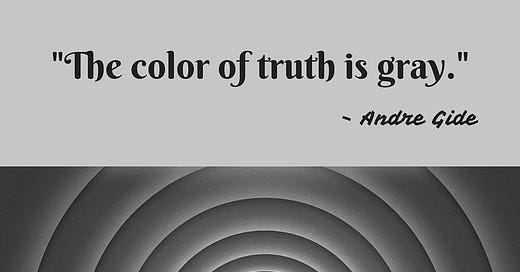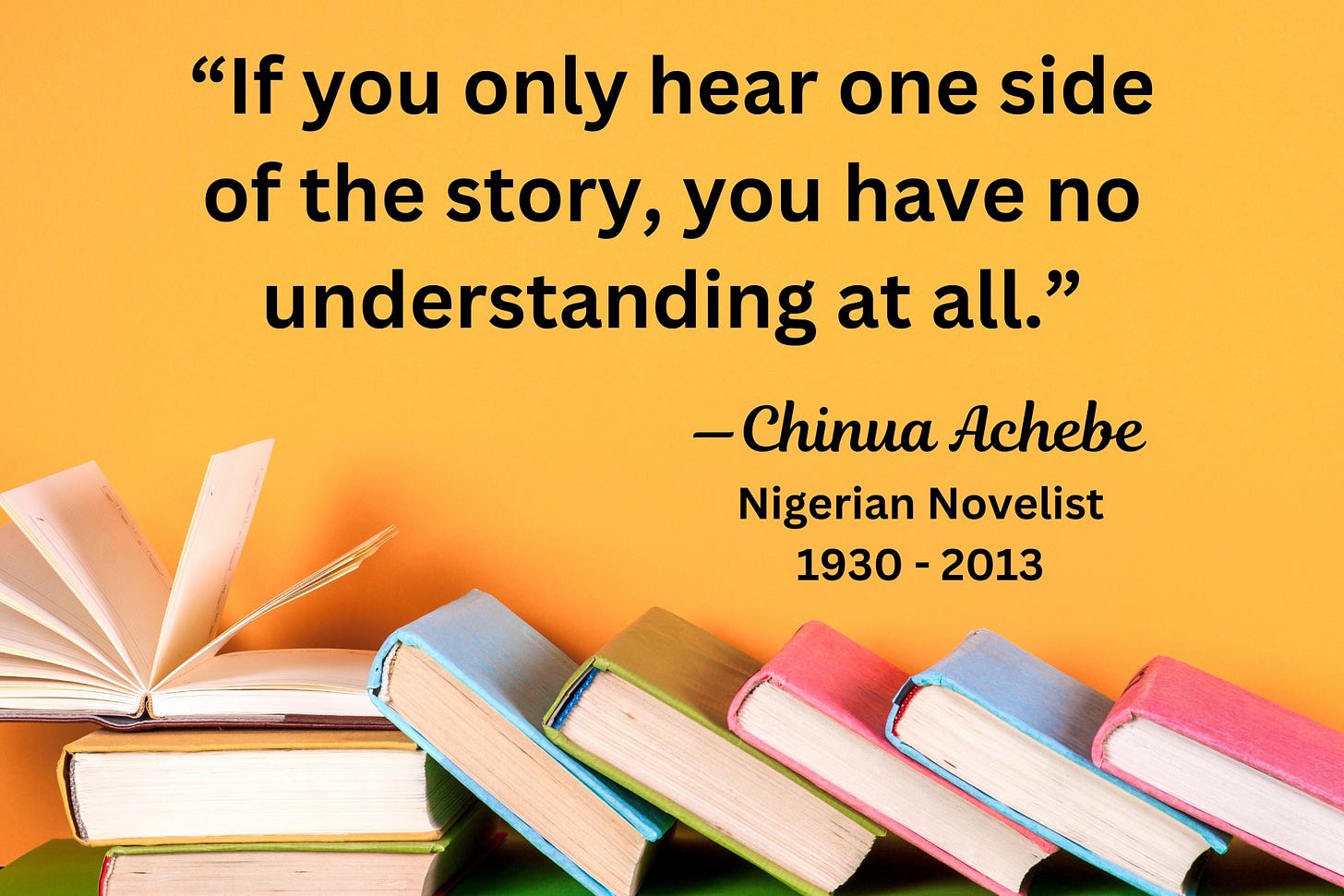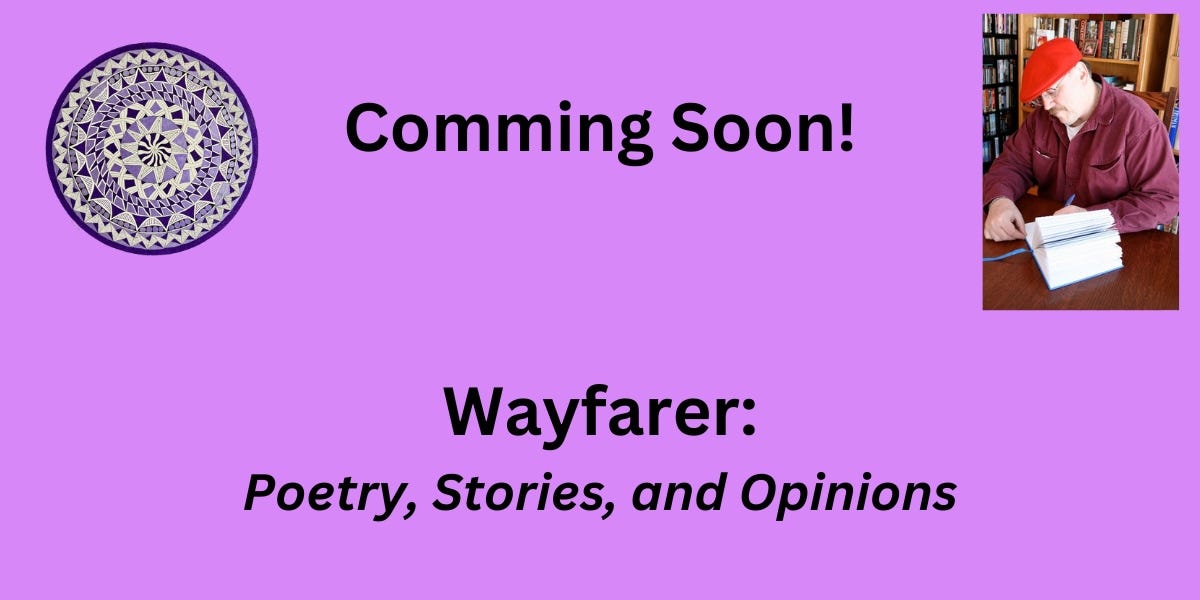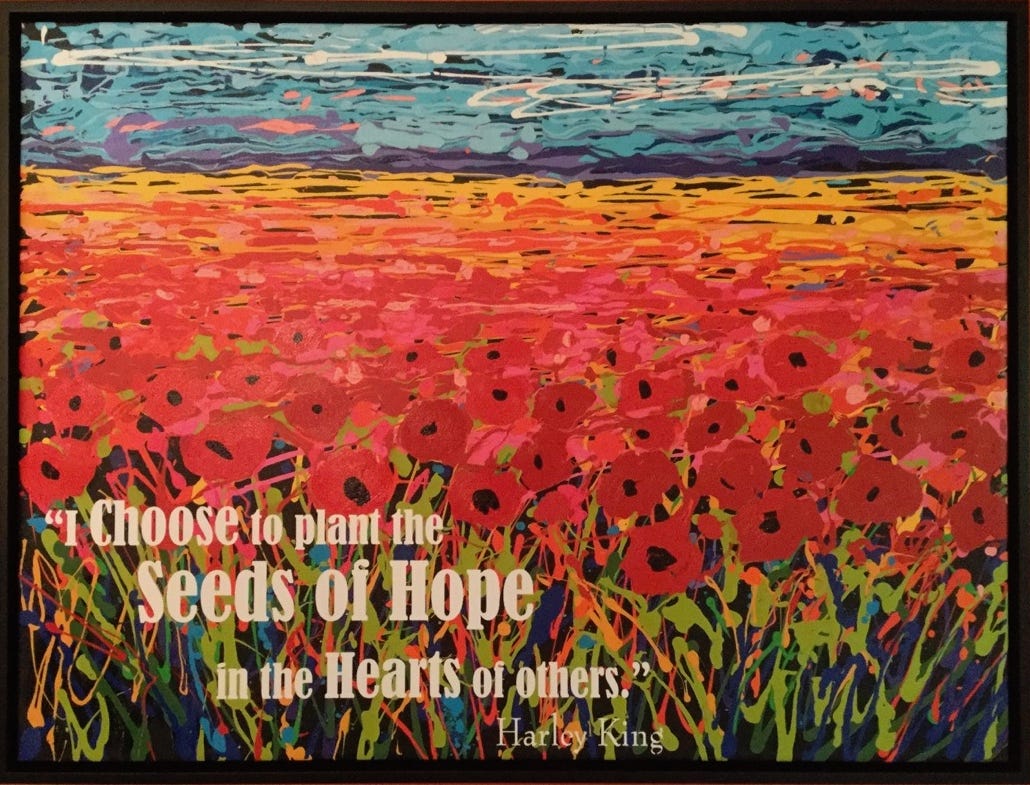Issue #56
Great novelists understand that truth is neither black nor white. The best characters are filled with shades of gray. Black and white characters are dull and leave little to the imagination or the heart. As readers, we connect most with the characters who are conflicted and whose behavior is neither purely evil nor purely good. The best stories communicate the nuances of the human soul.
When it comes to human interactions, nothing is black and white. You can always find some gray. Every person has some good in him as well as some bad. For me, very little truth is black and white. Most truth, if not all, has various shades of gray. No human being has a monopoly on truth. We all make mistakes. We seldom know the whole story.
Yet, many people choose to see the world as black and white. They quickly select sides and set up barriers that give rise to conflict. Sometimes, artists fall into the trap of seeing the world as black and white: "Only our art style is good. Everything else is bad." For much of the 20th century, artists moved away from realism and adopted cubism, abstract expressionism, surrealism, and magical realism. Realism became a negative word.
There are literary novels and genre novels in publishing. Literary snobs consider mysteries, thrillers, science fiction, fantasy, and romance novels inferior to literary novels.
I grew up in a church where congregations would split up over such simple things as whether men should wear clothes with buttons or fish and hook. The fights between the groups of people occur because each group believes they have cornered the market on truth. They probably agree on 95% of the issues but allow the five percent to divide them. They don't see the gray because they are blinded by the black and white, the good and evil.
In business, the world is rarely black and white. Leaders have to choose between varying shades of gray. There is usually no clear decision, and the leader is left with choices that have several possible outcomes.
Who are you separated from because you each think you own the truth? A parent? A sibling? A friend? A story does not just have one or two sides. It has thousands of sides. Nothing is black and white. Everything is gray. Break down those black and white walls today and gather those you love in your arms.
Some people listen to only one side of the story before making a decision and taking action. Later, they discover they made a mistake because they heard only one side of the story. Creative leaders understand the importance of listening to all sides of a story to make the best decision possible.
I once worked with a Chief Operating Officer (COO) who listened well to multiple sides of a story. He constantly asked questions of people at all levels of the organization to get a better picture of the truth.
Some people told the COO what they thought he wanted to hear, others gave him a watered-down version of the events, and some tailored their answers to fit their agenda and what they hoped to achieve. By asking similar questions to people throughout the organization, the COO could form a clearer understanding of the truth.
Are you listening to multiple sides of a story, or are you leaping to conclusions and making decisions based on the first story you hear?








"Nothing is black and white. Everything is gray. " Good point, Harley. I think variety is the spice of life. So not just black or white or gray, but every color imaginable.
I am a centrist-liberal-progressive who has a good friend who is a MAGA Republican. We don't see eye-to-eye on politics, but we do connect on faith matters even though he is a Baptist and I am a Lutheran. We manage to put our differences aside. We consider each other brothers, and as you know, brothers often bicker and don't see things through the same lens. I like having friends who are different. I have African-American friends, Mexican friends, Columbian friends, a Moslem friend, a Jewish friend, some wealthy friends, and many not-so-wealthy friends. I don't have any non-believing/atheist friends (though my kids come close). The key to getting along, I've found, is to set aside our differences and focus on our similarities, the beliefs we hold in common.